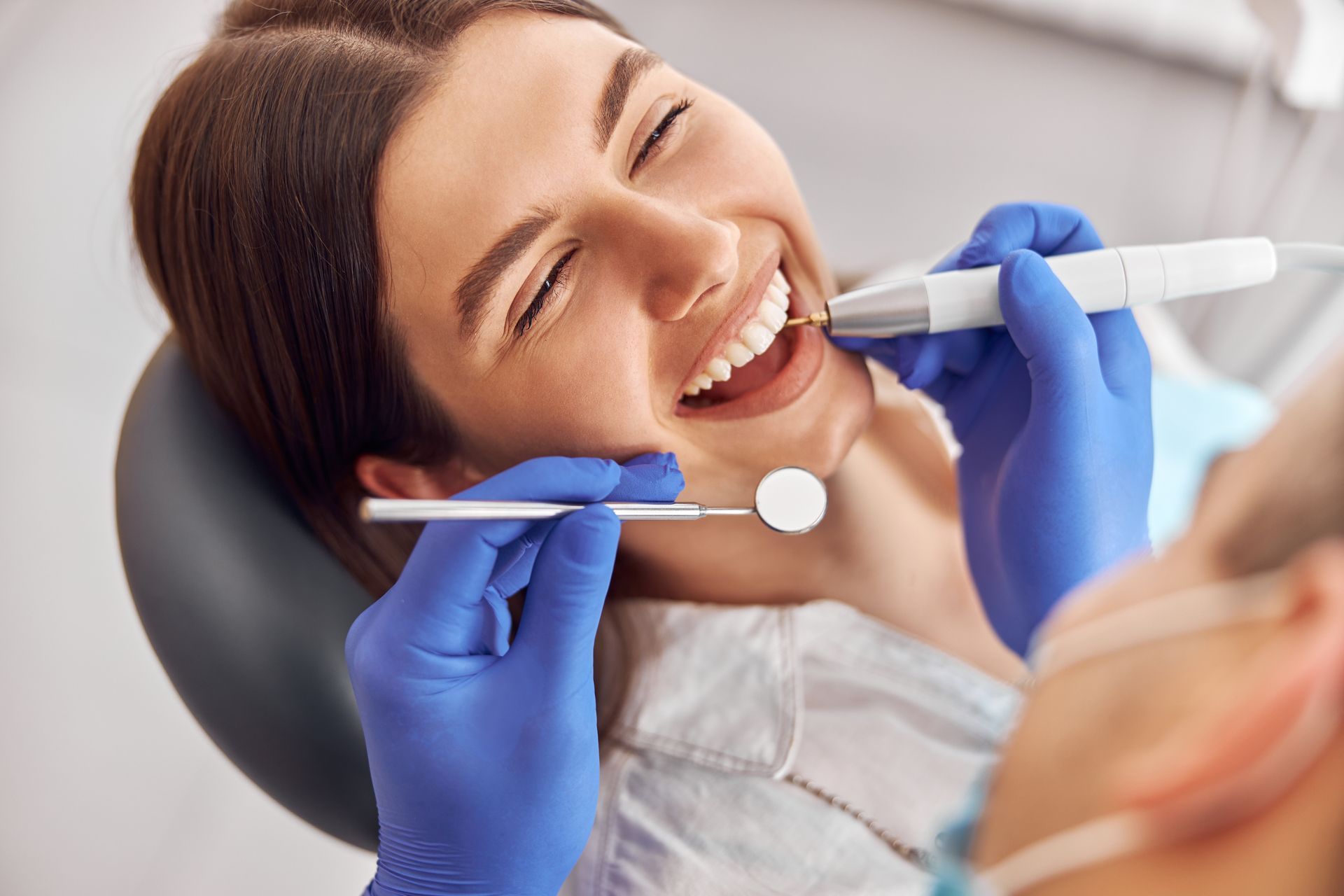The Truth About Teeth Whitening: Safe Practices and What to Avoid
A bright, white smile can boost confidence and enhance your overall appearance, so teeth whitening has become one of the most popular cosmetic dental treatments. However, with so many whitening options available—from over-the-counter products to professional treatments—it’s essential to understand which methods are safe and effective and which can cause more harm than good.
Understanding Teeth Stains: Why Do Teeth Become Discolored?
Before diving into whitening methods, it’s helpful to understand what causes teeth to stain in the first place. There are two main types of tooth discoloration:
- Extrinsic Stains: These affect the outer surface of the tooth (enamel) and are caused by food, drinks (coffee, tea, red wine), smoking, and poor oral hygiene.
- Intrinsic Stains: These occur within the tooth (dentin) and may be caused by aging, medications, excessive fluoride exposure, or trauma to the tooth.
Knowing the type of stains you have can help determine the best whitening method for you.
Common Teeth Whitening Methods: Pros and Cons
1. Professional Teeth Whitening (In-Office Treatment)
How It Works: A dentist applies a potent bleaching agent (usually hydrogen peroxide or carbamide peroxide) to the teeth, sometimes using a special light or laser to accelerate the process.
✅ Pros:
- Fast and highly effective results (teeth can be several shades lighter in one visit).
- Performed by a dental professional, reducing the risk of damage to teeth and gums.
- Longer-lasting compared to at-home methods.
❌ Cons:
- More expensive than at-home treatments.
- May cause temporary tooth sensitivity or gum irritation.
- Requires multiple visits for the best results.
💡 Best For: Individuals looking for the most dramatic and immediate whitening results.
2. At-Home Whitening Kits (Custom Trays from a Dentist)
How It Works: A dentist provides custom-made trays and a professional-grade whitening gel that you wear at home for a specified period (usually 30 minutes to an hour per day for a couple of weeks).
✅ Pros:
- More affordable than in-office whitening.
- Custom trays provide even application and better results than over-the-counter strips.
- Lower risk of gum irritation compared to store-bought kits.
❌ Cons:
- Takes longer to see results compared to in-office whitening.
- Potential for temporary tooth sensitivity.
💡 Best For: Those who want professional results but prefer the convenience of whitening at home.
3. Over-the-Counter Whitening Strips and Gels
How It Works: These products contain a lower concentration of peroxide-based bleaching agents and are applied directly to the teeth using strips or gel trays.
✅ Pros:
- Readily available and more affordable than professional treatments.
- Easy to use at home.
- Can provide noticeable results over time.
❌ Cons:
- Less effective than professional treatments and may take weeks to show results.
- Can cause uneven whitening, especially if strips do not fully cover all teeth.
- May lead to increased tooth sensitivity or gum irritation.
💡 Best For: Individuals looking for a budget-friendly whitening option with moderate results.
4. Whitening Toothpaste and Mouthwash
How It Works: These products contain mild abrasives or low levels of hydrogen peroxide to help remove surface stains with daily use.
✅ Pros:
- Easy to incorporate into a daily routine.
- Affordable and widely available.
- Helps maintain whitened teeth after professional treatment.
❌ Cons:
- Only removes surface stains; does not change the natural color of teeth.
- May take weeks or months to see minimal improvement.
- Overuse of abrasive toothpaste can wear down enamel, leading to sensitivity.
💡 Best For: People who want to maintain their current tooth shade or prevent new stains.
5. DIY and Natural Whitening Methods (What to Avoid!)
Many home remedies are advertised as natural ways to whiten teeth, but some can do more harm than good. Here are a few to avoid:
🚫 Baking Soda & Lemon Juice – Lemon juice is highly acidic and can erode enamel, while baking soda is abrasive and can weaken teeth over time.
🚫 Activated Charcoal – Despite its popularity, charcoal is abrasive and can strip away enamel, leading to long-term damage.
🚫 Hydrogen Peroxide Rinses – Using undiluted hydrogen peroxide frequently can irritate gums and damage soft tissues.
🚫 Strawberries & Apple Cider Vinegar – The acids in these natural ingredients can wear down enamel, making teeth more susceptible to staining and sensitivity.
💡 Safer Alternative: If you prefer a natural approach, try oil pulling with coconut oil or eating crunchy fruits and vegetables like apples, carrots, and celery, which naturally help clean teeth.
Safe Whitening Alternatives & Best Practices
If you want to maintain a bright smile while minimizing risks, consider these safe whitening practices:
✅ Brush and Floss Regularly – Keeping your teeth clean helps prevent stains from developing in the first place. Use a fluoride toothpaste to strengthen enamel.
✅ Drink Plenty of Water – Rinsing your mouth with water after consuming stain-causing foods and drinks can help prevent discoloration.
✅ Use a Straw – Use a straw to minimize contact with your teeth when drinking coffee, tea, or soda.
✅ Eat Whitening Foods – Crunchy fruits and vegetables act as natural toothbrushes, helping to remove surface stains.
✅ Get Regular Dental Cleanings – Professional cleanings remove plaque and surface stains, keeping your smile bright without the need for harsh whitening treatments.
Conclusion
When done correctly, teeth whitening can be a safe and effective way to enhance your smile. Professional treatments offer the best and safest results, while over-the-counter options can provide moderate whitening at a lower cost. However, it’s crucial to avoid harmful DIY methods that can cause lasting damage to your enamel.
If you’re considering teeth whitening, consult your dentist to determine the best method for your needs. A healthy, bright smile is always in style, and with the right approach, you can achieve it safely and effectively!


